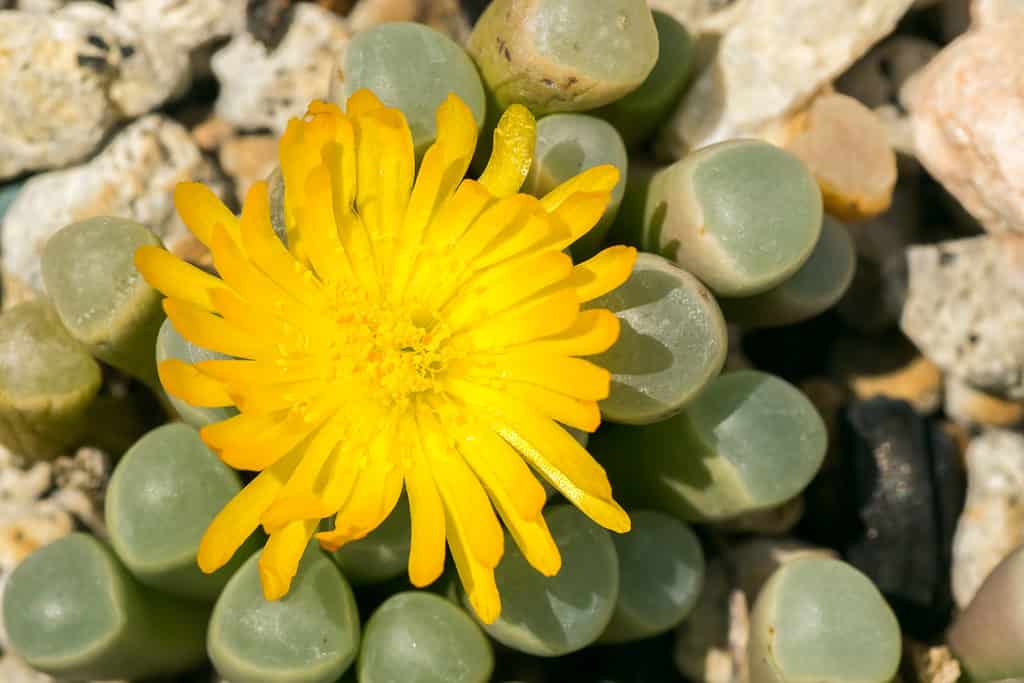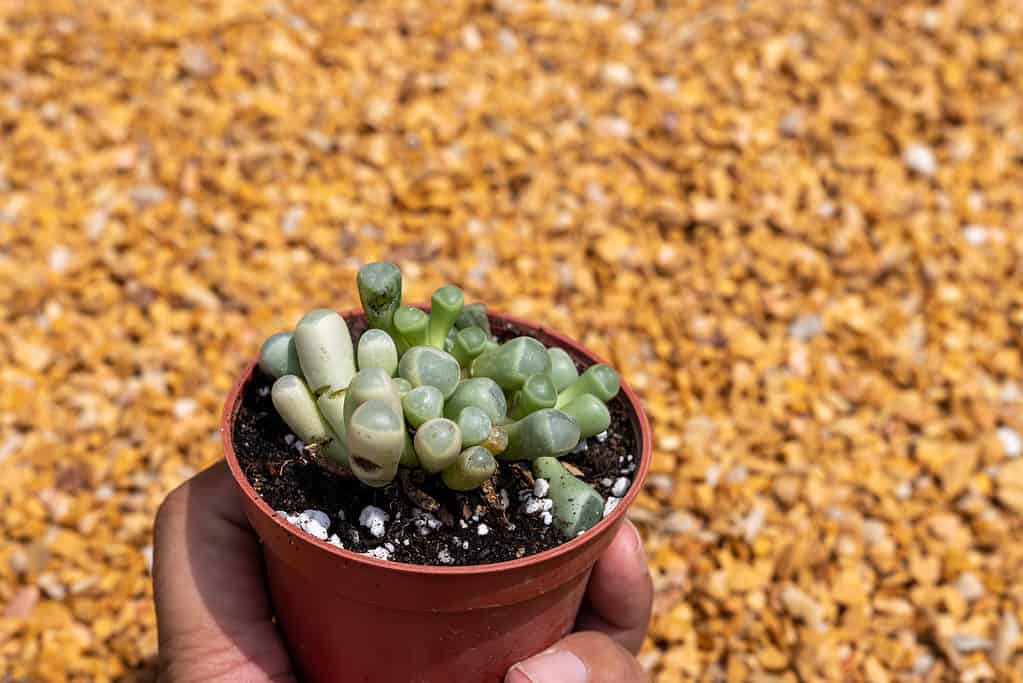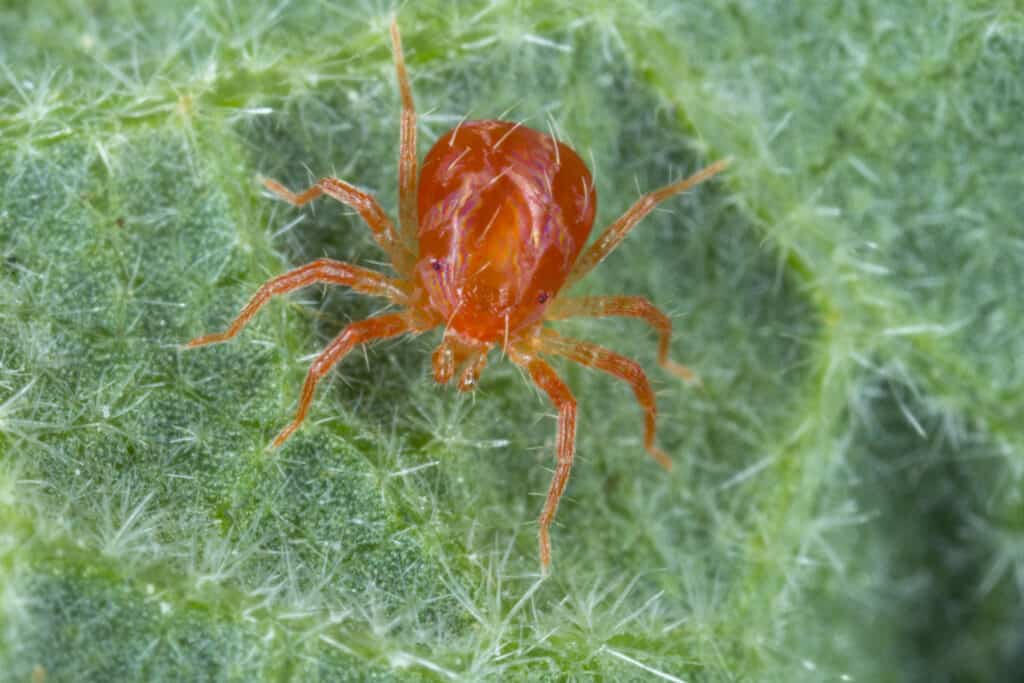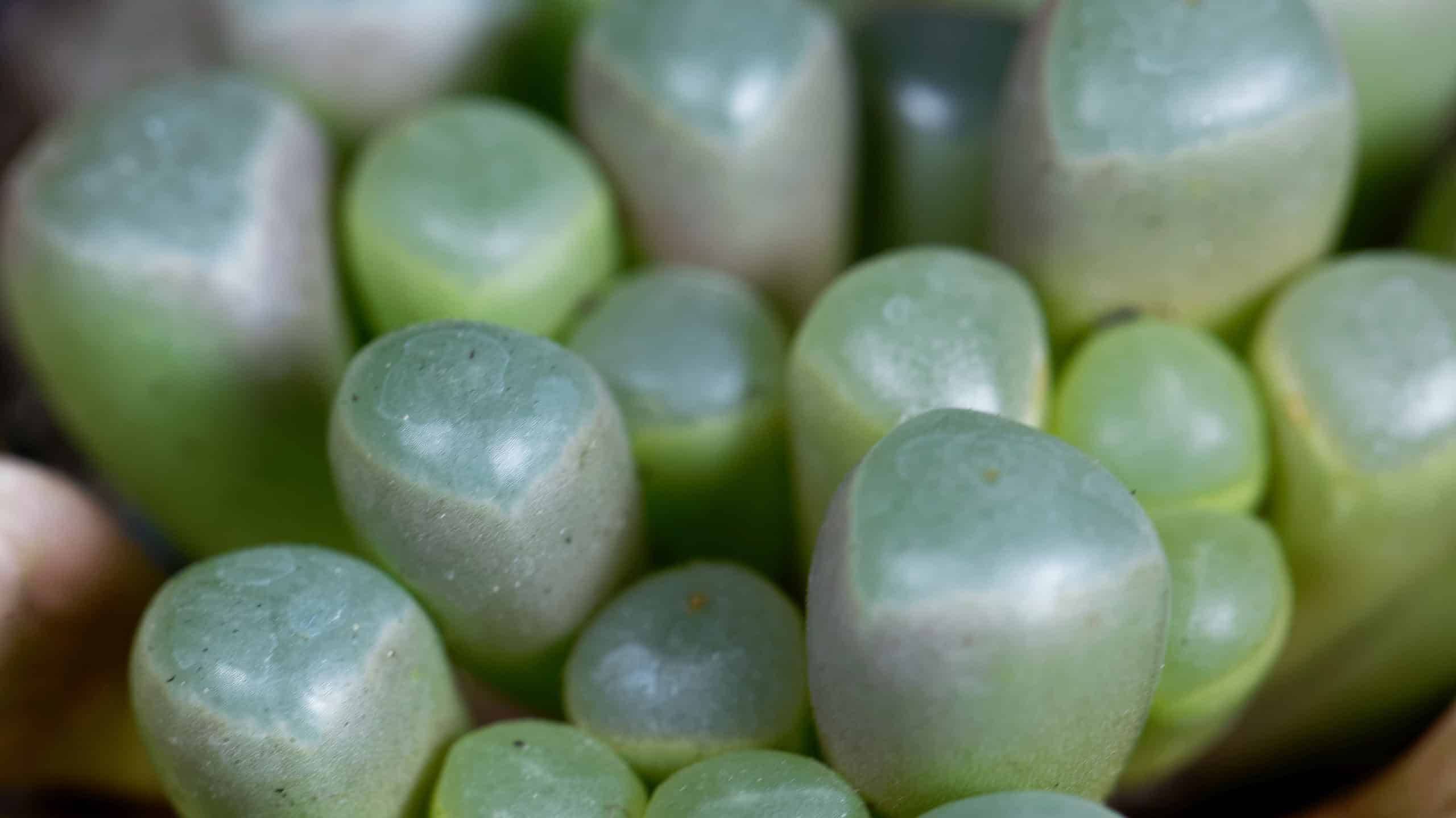One look at this succulent and you’ll immediately see why it is known as baby toes. The tubes of this adorable plant look a lot like an infant’s appendages.

It’s easy to see the similarities between an infant’s foot and the baby toes succulent.
©iStock.com/Liudmila_Fadzeyeva
These fleshy-leaved succulents are native to Namaqualand in South Africa and Namibia, where the plant normally grows underneath sandy soil. Sometimes called the “window-leaf,” only the translucent tips are exposed to the sunlight, allowing the plant to photosynthesize.
It blooms in late summer with flowers that look similar to daisies. Blooms can appear in a variety of colors. It’s a small plant, maxing out around 3 inches tall.

The baby toes succulent blooms with daisy-like flowers in a variety of colors, such as bright yellow.
©iStock.com/shihina
With its cute appearance coupled with its ease of care, the baby toes succulent is a popular domestic plant for both beginning and veteran gardeners. Let’s talk about how you can succeed in growing and propagating this splendid little plant.
| Baby Toes Succulent Facts | |
|---|---|
| Botanical name | Fenestraria rhopalophylla |
| Common names | Baby Toes, Living Stones, Window-leaf, Window plant |
| Sunlight | Full sun |
| Soil | Sandy, well-drained |
| Water | Infrequent, every 2-3 weeks |
| Indoors or Outdoors | Sunny window indoors. Outdoors in Zone 10 and above. |
Sunlight
This perennial succulent loves sunbathing. Direct sunlight for 6-8 hours a day is ideal.
Soil Type
The baby toes succulent requires well-draining soil, so either a succulent or cactus soil mix is a good choice. If you are creating your own mix, use equal parts of regular potting soil, perlite, and sand. A terracotta pot is a great choice as it wicks away moisture from the soil.

Terracotta pots provide a dry environment for baby toes succulents to thrive.
©iStock.com/Jenifoto
Water
Like most other succulents, a baby toes plant is prone to root rot and should not be watered daily, or even weekly. Start with a plan to water every 2 weeks, using the soak-and-dry method.
If the soil is not sufficiently dry at 2 weeks, you can extend the watering timeframe as much as another week.
Placement
When grown outdoors, find a spot with direct sun. Remember that this is a desert plant, so it grows best in low humidity and has almost no frost tolerance. If you live in a Plant Hardiness Zone under Zone 10, plant this succulent in containers that can be moved inside during colder weather.
When grown indoors, a window with full sun access is needed. If that is not available, a grow light may be used as a supplement.
Propagation
It is easy to propagate this succulent. The baby toes plant produces offsets as it matures. You can divide one of these pups from the mother plant by gently pulling its roots away from the main root ball. You can then replant the offset and it will produce another plant.
Common problems
The most common problem with baby toes succulents is overwatering which can lead to root rot.
This hardy plant is not prone to many pests, but aphids, spider mites, and scale insects such as mealybugs can be problematic.

Spider mites have a distinctly red/orange color that distinguishes them from aphids.
©Tomasz Klejdsz/Shutterstock.com
If only a few pests are present, they can be washed away with water. For larger infestations, a succulent-safe insecticide can be used. Imidacloprid and avermectin are good choices. Carefully follow the instructions so as not to harm the plant.
Up Next:
Thank you for reading! Have some feedback for us? Contact the AZ Animals editorial team.








